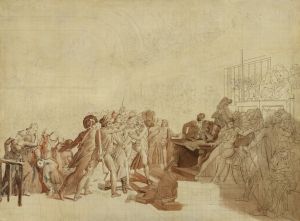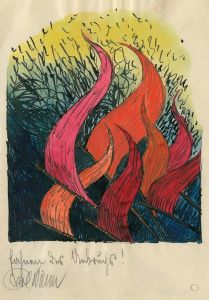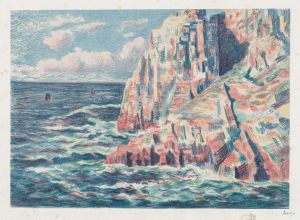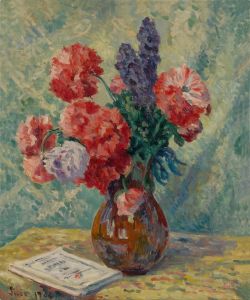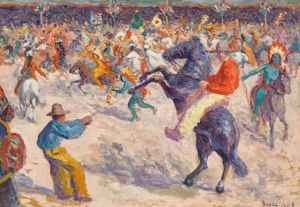
Le Front populaire
A hand-painted replica of Maximilien Luce’s masterpiece Le Front populaire, meticulously crafted by professional artists to capture the true essence of the original. Each piece is created with museum-quality canvas and rare mineral pigments, carefully painted by experienced artists with delicate brushstrokes and rich, layered colors to perfectly recreate the texture of the original artwork. Unlike machine-printed reproductions, this hand-painted version brings the painting to life, infused with the artist’s emotions and skill in every stroke. Whether for personal collection or home decoration, it instantly elevates the artistic atmosphere of any space.
Maximilien Luce, a prominent French Neo-Impressionist painter, created the artwork "Le Front populaire" in 1936. This painting is a significant representation of the political and social climate in France during the mid-1930s. Luce, known for his commitment to social causes and his involvement in anarchist movements, often depicted scenes that reflected his political beliefs and the struggles of the working class.
"Le Front populaire" captures the essence of the Popular Front, a political coalition in France that came to power in 1936. The Popular Front was an alliance of left-wing movements, including the French Communist Party, the French Section of the Workers' International (SFIO), and the Radical and Socialist Party. This coalition was formed to combat the rising threat of fascism and to address the economic hardships faced by the working class during the Great Depression.
The painting portrays a vibrant and dynamic scene, likely depicting a demonstration or a public gathering, which were common during the era of the Popular Front. Luce's use of bright colors and energetic brushstrokes conveys a sense of optimism and solidarity among the people. The figures in the painting are shown in various poses, some holding banners or flags, symbolizing their unity and collective action.
Luce's technique in "Le Front populaire" is characteristic of his Neo-Impressionist style, which he developed after being influenced by Georges Seurat and Paul Signac. This style is marked by the use of small, distinct dots of color that blend together when viewed from a distance, creating a luminous and vibrant effect. Luce's mastery of this technique is evident in the way he captures the light and movement in the scene, giving the painting a sense of immediacy and life.
The historical context of "Le Front populaire" is crucial to understanding its significance. The Popular Front government, led by Léon Blum, implemented several progressive reforms aimed at improving the lives of workers. These included the introduction of the 40-hour workweek, paid vacations, and collective bargaining rights. The period of the Popular Front was marked by a sense of hope and progress, despite the looming threats of fascism and the eventual outbreak of World War II.
Maximilien Luce's "Le Front populaire" is not only a testament to his artistic skill but also a powerful political statement. It reflects his dedication to social justice and his belief in the power of collective action. The painting remains an important historical document, capturing a moment of significant political and social change in France.
In summary, "Le Front populaire" by Maximilien Luce is a vivid portrayal of the Popular Front movement in 1936 France. Through his Neo-Impressionist technique, Luce effectively conveys the energy and optimism of the period, highlighting the importance of unity and collective action in the face of adversity. The painting stands as a significant work of art that encapsulates the spirit of a pivotal moment in French history.





